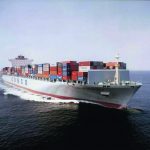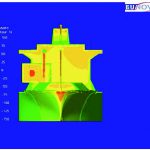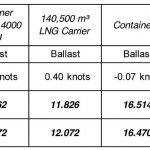The speed-power characteristics of ships have been at the core of ship design.
With new international environmental rules accepted, they are becoming even
more important.
To prove the contractually agreed speed-power relations, speed trials are conducted at the yard prior to delivery. In the[ds_preview] past, schedule integrity of the vessel was often the most important factor of the speed requirements. This resulted in relatively high design speed requirements. However, today owners and operators are keen to reduce fuel oil consumption to decrease the operational costs. Furthermore, the International Maritime Organization (IMO) has implemented new rules to reduce CO2 emissions. To fulfill those rules, each new vessel has to undergo unified strictly prescribed speed trials.
About ten years ago, a small group of shipowners, together with the Maritime Research Institute (Marin) in Holland, started a »Sea Trial Analysis Joint Industry Project« (STA-JIP) to modernise the existing speed test procedures and calculation methods. At that time, each shipyard used its own method, and the International Standard (ISO 15016) about these procedures was considered to be outdated and not fit for modern vessels.
The importance of this subject was soon recognized. As of today, the group has 36 members (major shipowners, shipyards, research institutes and classification societies worldwide). It is quite remarkable that so many different stakeholders in the maritime industry voluntarily joined together. The group is chaired by E.R. Schiffahrt.
The STA-JIP has developed and documented a new industry standard for conducting and analyzing speed trials. A new method for wave corrections was generated. Systematic data sets for wind correction were collected and consistent analysis procedures were derived. The resulting best practice recommendations were implemented in a software package that facilitates the analysis and reporting on board, immediately after the speed trials.
The STA-JIP group has also validated the analysis procedures with the introduction of ultra-large container vessels (ULCS). For that reason full draught speed tests have been conducted in the Mediterranean on a 14,000 TEU vessel.
After discussions with the International Towing Tank Conference (ITTC), the association of respected maritime research institutes (amongst others HSVA in Hamburg), the ITTC has accepted the STA-JIP methods together with the Japanese wave
correction method and published them as the ITTC 2012 guidelines for speed-power analysis.
During the last meeting of the environmental committee of IMO, the ITTC (as
an official IMO observer) presented their guidelines as a transparent, unambiguous and practical analysis method. In the discussions several countries noted that the method can be used by yard and owner for contractual agreements as well as for the assessment of the environmental rules of the International Maritime Organization.Finally, the IMO has accepted those guidelines as the only method to be used for speed-power analysis on vessels above 100 m length worldwide.
A detailed article on the STA-JIP is provided online: www.hansa-online.de/STA-JIP.pdf
Henk van den Boom, Hans Huisman, Frits Mennen






















